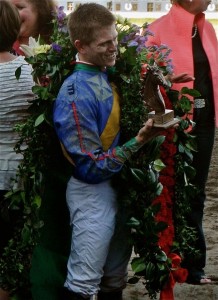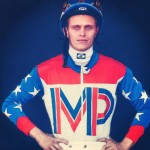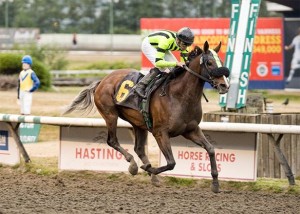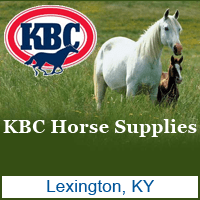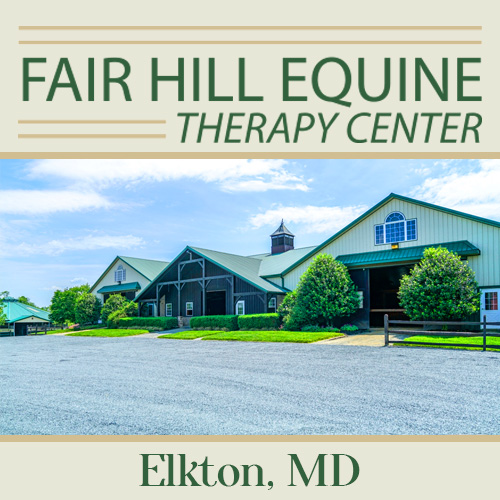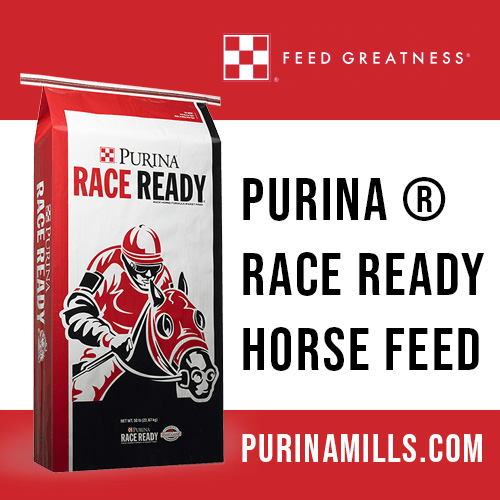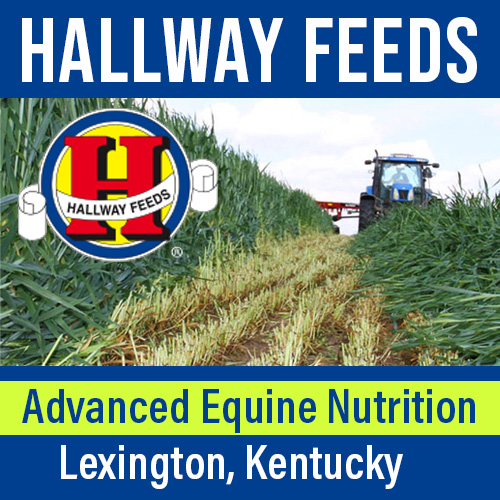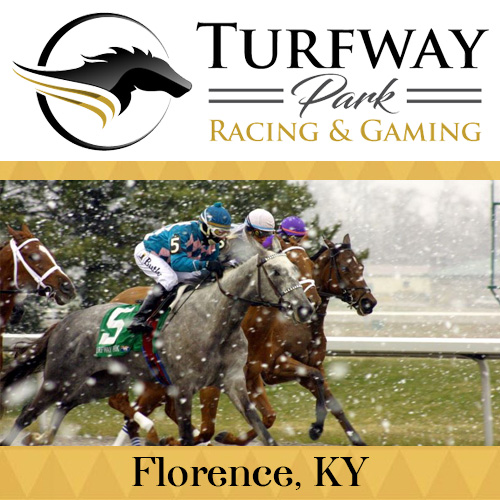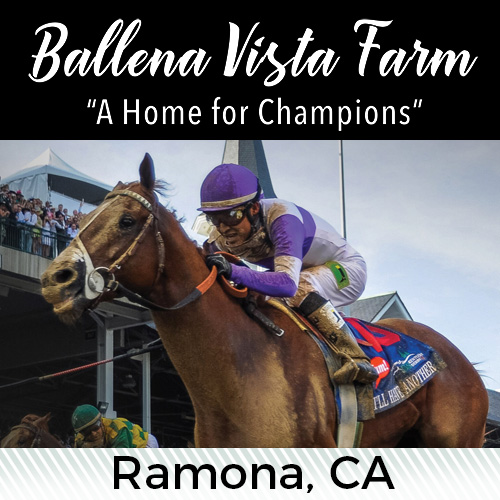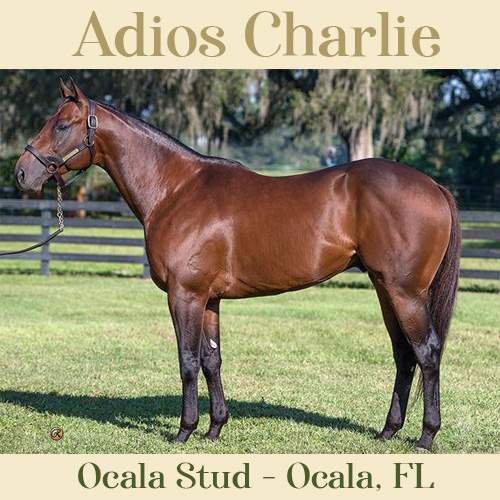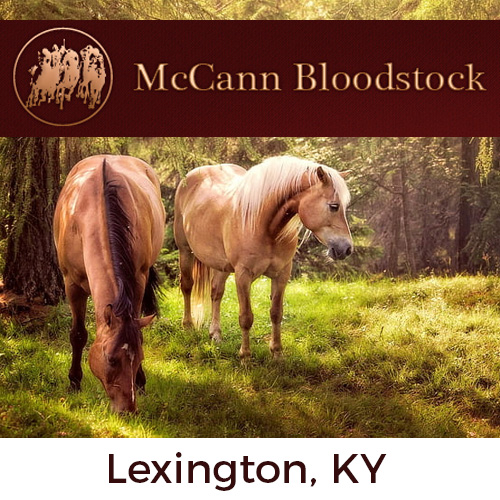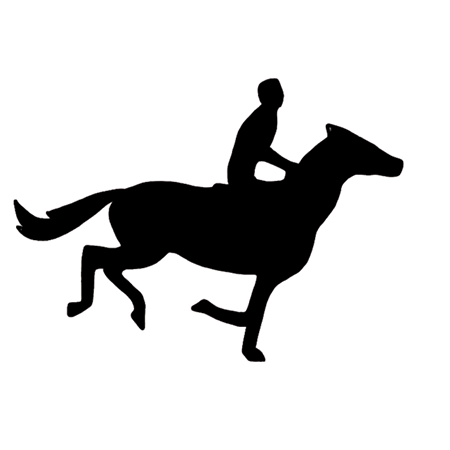The Interviews: Hard Charging Jockey California Jockey Billy Antongeorgi
New York born jockey William "Billy" Antongeorgi III has so far ridden close to 800 winners for purse money earnings of over $14,500,000 so far in his career. After spells riding in Southern California and at Philadelphia Park he is currently riding very successfully at Golden Gate. Billy talked to Thoroughbred People.
TBP: Billy how did you get interested in horse racing?
BA: My mother, Alexandra, was a horse trainer, she used to show jump in New York. My family's from Long Island and she was always into horses. Then she started galloping racehorses at Belmont and Aqueduct. She got a training licence and when I was about three years old we moved to Kentucky where she did most of her training at Keeneland, River Downs, Turfway Park, tracks like that.
TBP: Did you get on horses very young?
BA: I did but I didn't think I was going to go into it as a career, I was around it the whole time and I was thinking I would do something else. Then we moved to San Diego, California and my Mom went back to training hunter jumpers and giving lessons. She had a big clientele and a couple of nice horses who were ex-racehorses. I was around ten or eleven and I thought the horse operation was pretty cool and there were a ton of girls around too, so I got interested and started taking hunter jumper lessons and got into it. It went really well, I travelled around to big competitions, I was thinking about trying for the Olympics at one point.
Then one summer I started galloping racehorses at a training facility that was across the way from our show jumping barn. I fell in love with galloping and was making some extra cash, and people started talking to me about becoming a jockey. I was still pretty driven and into the showjumping, but then I decided to give it a try and got my gallop licence at Del Mar. Henry Moreno put me up on horses and gave me a shot, I had told him I'd been galloping horses down at Rancho Paseana. I was his main gallop boy for quite a while and I moved up to Santa Anita when the meet started there. Then I started working horses and branching out to ride for other trainers as well.
TBP: How was it transitioning from Hunter Jumpers to Racehorses?
BA: It was a lot different, you use all different muscles. I thought going in it was going to be easy, I'd been show jumping strong horses over five foot verticals and so on, I'd thought that show jumping was harder but I was wrong. With thoroughbred racehorses it's a different type of horse, the hunter jumpers are a lot more trained to the rider so it's a completely different style of riding which I was green to when I first came into it.
TBP: Who were the top riders in the jockey colony when you started in Southern California and who made the biggest impression on you?
BA: Alex Solis, Corey Nakatani, Garret Gomez, David Flores, all the top guys were there. I really liked Nakatani's style, a really strong rider, I liked the way he looked coming down the lane, the way he looked on a horse and the way he threw crosses. Gomez, I liked his style and the way he finished on horses. And I learnt lots from Alex Solis and David Flores too.
TBP: Was it tough or intimidating riding around them or were they welcoming and helpful?
BA: They were really welcoming, I was blessed to come up with riders like that. When I had the bug it was tough for me to get business for the first few months, but I wouldn't have had it any other way as I was getting a lot out of it and a great education. I used to go running with Alex Solis, Mike Smith and David Flores up in the Sierra Madres, Mike Smith actually set me up with his personal trainer, and they all helped me out big time.
TBP: What was your first ever ride?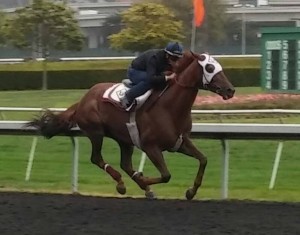 BA: It was a horse for Paul Aguirre called Five O'Clock, I had worked her in the mornings, I think the race was an $8000 claimer and she could run. Paul said "I've got your first ride for you and it's a live one." I was in the six hole and leaving the gate, second or third jump I slipped out of my outside stirrup, and all I'm thinking going down the backside on the lead is "Man I'm looking bad" as I'm trying to get the stirrup back. We got to the quarter pole and we're still running so I rode her to the line with one stirrup and we won. Two jumps after the wire I got the stirrup back...
BA: It was a horse for Paul Aguirre called Five O'Clock, I had worked her in the mornings, I think the race was an $8000 claimer and she could run. Paul said "I've got your first ride for you and it's a live one." I was in the six hole and leaving the gate, second or third jump I slipped out of my outside stirrup, and all I'm thinking going down the backside on the lead is "Man I'm looking bad" as I'm trying to get the stirrup back. We got to the quarter pole and we're still running so I rode her to the line with one stirrup and we won. Two jumps after the wire I got the stirrup back...
TBP: How did things go after that first winner?
BA: Some people were advising me to push on and some other people said I wasn't ready. Some said I shouldn't have lost my stirrup in that first ride but others said I did well to stay on and win on the horse and that a lot of guys would have pulled the horse up. It was a little tough getting more business but I just kept working hard, working horses in the morning and getting the odd horse here or there to ride. Then business started getting good later in the year at the Santa Anita winter meet, I hit a hot streak for a while there and I think I was around fifth or sixth in the standings.
Then I lost my bug and it got real tough and I struggled for a while. I decided to go to Philadelphia to try things out there, they had more racing, bigger fields and more horses and I'd seen some other riders make the same move and there were other tracks close by too. I got there and within the first month a horse flipped right over in the gate with me and I got caught and broke my ankle. It was a pretty bad break and I was out for six months.
I came back to San Diego to recuperate and when the ankle was healed up enough I called up the personal trainer Mike Smith had introduced me to, he was great, I started working out with him and he got me back in shape.
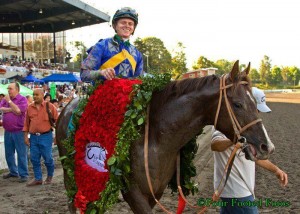 TBP: How did you find riding on the Philadelphia track and circuit compared to Golden Gate Fields for example?
TBP: How did you find riding on the Philadelphia track and circuit compared to Golden Gate Fields for example?
BA: The Philadelphia track was deeper and more sandy, so it was a slower track than the California tracks. I remember when I got there people saying "Oh you're from California so you should be good out of the gate." The perception is that because you're coming from California you must be a speed rider, but it's true that it's a little more aggressive style of riding here compared to back east where they will sit more and not go so fast early in the race.
TBP: What sort of exercise do you do outside of race riding to stay at the top of your game as a rider?
BA: For me it's a little bit of everything. You have to have a lot of air so I do a lot of running, I try to do two to three miles every day. I weight lift once or twice a week, it's good for my strength and it's a mental thing too and I think it helps me in a finish. With working horses every morning and riding races every day I stay pretty fit.
TBP: Is their anything in particular that you feel you are much better at now than when you started out race riding?
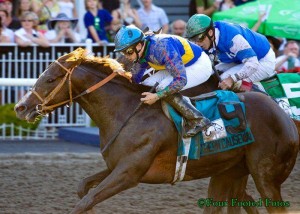 BA: Well everything really, but timing is a big thing, you don't have your timing down when you start, and being smart about a race, knowing where your fellow riders are and what they are likely to do in a situation. You never stop learning. I remember Alex Solis told me that he was still learning after winning thousands of races, even Breeders Cup races and to never get ahead of yourself as you'll get horses who will come along who teach you that you don't know everything. That stuck with me. I am pretty hard on myself too, after every race day I go back and watch the replays of the races to see what I might or could have done differently, so I can keep learning and hopefully get better every day.
BA: Well everything really, but timing is a big thing, you don't have your timing down when you start, and being smart about a race, knowing where your fellow riders are and what they are likely to do in a situation. You never stop learning. I remember Alex Solis told me that he was still learning after winning thousands of races, even Breeders Cup races and to never get ahead of yourself as you'll get horses who will come along who teach you that you don't know everything. That stuck with me. I am pretty hard on myself too, after every race day I go back and watch the replays of the races to see what I might or could have done differently, so I can keep learning and hopefully get better every day.
TBP: What do you enjoy the most about race riding and track life?
BA: The focus it gives you, especially when you're doing well, there's no other feeling like it, horses are responding for you and you're winning races. You'll see riders that get in the zone and they're just winning, on longshots as well as favorites, things are clicking and you have that confidence when that's happening. Crossing the wire first is an awesome feeling, especially when you ride a few winners close together.
TBP: How do you cope when things aren't quite so good and you haven't ridden a winner for a few races?
BA: That's always tough, it's an up and down business, you can be a very good rider and just not have the horses or stock beneath you. It's a mental thing, you just have to keep going and tell yourself to just keep working hard and know that even the greats go through ups and downs and slumps sometimes. If you keep a positive attitude and stay focused you'll come through it.
TBP: With a lot of horses and California Chrome is an example, people talk about how horses like or do not like being in a certain position in a race, either inside or outside of horses or down on or away from the rail for instance, do you find a lot of horses are like that?
BA: Every horse is different, they all have their own individual personalities, some horses like certain things and some don't. Some horses will explode if you take them to the outside coming into the stretch and the same horse if you're on the inside won't run his race, you need to try to get to know what they like and how they respond best. If I haven't ridden a horse I always like to watch the replays of their previous races to see what I can find out.
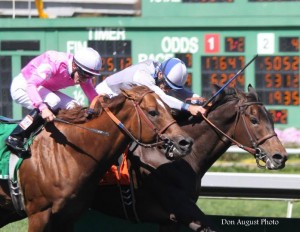 TBP: What do you think of synthetic tracks and how do you like riding on the Tapeta at Golden Gate fields compared to dirt tracks?
TBP: What do you think of synthetic tracks and how do you like riding on the Tapeta at Golden Gate fields compared to dirt tracks?
BA: I've always liked the synthetic surfaces including the Tapeta, I also rode at Keeneland and Del Mar on theirs. It seems kinder to horses and riders, there is less kickback too of course. When it rains you don't have to worry about slop or mud either. I like a good dirt track too though, especially when you're on a speed horse. I've been on a lot of hard, fast dirt tracks that are hard on the horses, ultimately my vote would go for synthetics over a really hard dirt track, but it looks like we're all going back to dirt.
TBP: When did you come to Northern California?
BA: I came out here in 2008 after I recovered from my ankle injury. Some people suggested I try it here, a couple of friend including Chris Linderos were here. I got hooked up with my agent Jay Robinson and things went pretty well. Jay was really good to me and I got into some good barns with some good trainers like Greg Gilchrist, his horses were awesome, most horses he ran were live in an allowance or a stakes race and I got on some really nice horses. Now he's retired from training I'll always miss Greg, he was one of my favorite guys to ride for and he put me on the map giving me some of those horses to ride.
TBP: Tell us about some of the nicest horses you've ridden, do you have any stand out favorites or hard knockers you liked a lot?
BA: Northern Causeway trained by Len Kasmerski, he's a really game horse, I rode him to win the Grade 3 British Columbia Derby at Hastings Park in Vancouver. I beat Russell Baze on a Jim Penney horse who was the favorite. Russell passed me coming down the lane on the outside and my horse dug back in and got back up to win. It was awesome. Then one of Greg Gilchrist's horses, Victorina, she was push button, a very cool horse, you could put her anywhere you wanted in a race and she was very versatile. She'd sprint, she'd route, turf, dirt, synthetic, she was of the first really nice horses that I got to ride and she'll always be a favorite of mine.
Horses are like people, they all have individual personalities and their quirks and idiosyncracies, it's nice to see and get to know them and one of the things I enjoy about riding.
TBP: What would you say is the best decision you have made in your career so far?
BA: After my injury I came here to Northern California, I'm really thankful that I came up here and that it's worked out so well. My best years of riding so far have been here, I've ridden a lot of winners and ridden for almost every trainer up here. I've also had the chance to ride and win on some really nice horses here for trainers like Jerry Hollendorfer who have gone on to win Graded Stakes races in Southern California. Hopefully one day soon I can get to ride horses like that down there too and in the top races across the US.
TBP: Which of your fellow riders here at Golden Gate do you least like to see coming alongside you if you are in with a winning chance coming into the stretch?
Russell Baze is obviously the first one, when I first got here I always liked to try and stick to Russell as he rode so many favorites and live horses and knew the track so well and it helped. He's amazing, he's got a stronger work ethic than most young guys and he is hungrier and still even more driven than almost anyone around. My spot is next to his in the jock's room, it's awesome to be next to him. Frank Alvarado is another great rider, really strong down the stretch, and some of the younger guys like JJ Hernandez are really good too. There is a lot of talent here.
TBP: What things could improve your life and career as a jockey?
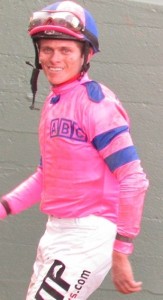 BA: Well the insurance thing, we have pretty good insurance here in California now, it's better than it has been in the past that's for sure, but we don't get contracts like other sports. It's day by day so it's nice to have some help if things go wrong.
BA: Well the insurance thing, we have pretty good insurance here in California now, it's better than it has been in the past that's for sure, but we don't get contracts like other sports. It's day by day so it's nice to have some help if things go wrong.
TBP: How do you feel about racing's popularity with the public? Do you have friends outside the game and do they come to the track?
BA: Racing always seems to get big around a Triple Crown attempt and get a lot of media attention, but only then really. Even the Breeder's Cup doesn't get that much attention outside of racing. I've been to some tracks that do good publicity and draw in bigger crowds, Emerald Downs for example, it's a smaller track but they do a good job getting a younger crowd in there with promotion and live bands and so on. A percentage of those young people will really enjoy and get curious about the racing and become fans. Emerald also does a lot of interviews with riders and trainers and that is entertaining and interesting for the public, and they also get the local news stations in a lot too. When I bring some of my friends from outside of racing to the track they have a really great time and learn a lot that they didn't know. We need more young fans, but part of the problem I think is that racing is quite "old school" and is in something of a false and dangerous comfort zone, a lot of racetracks don't promote themselves or the sport as much as they could. It's depressing when tracks like Hollywood Park and Bay Meadows close down.
TBP: What about the longer term, any plans to train one day?
BA: No, not really, hopefully I can have a long riding career and save enough money to be able to retire when I stop riding. I would be interested in doing something in the media, maybe some commentating or something like that.
------------------------------------------------------------------------------------
ThoroughbredPeople.com
KBC Horse Supplies
https://www.kbchorsesupplies.com/
